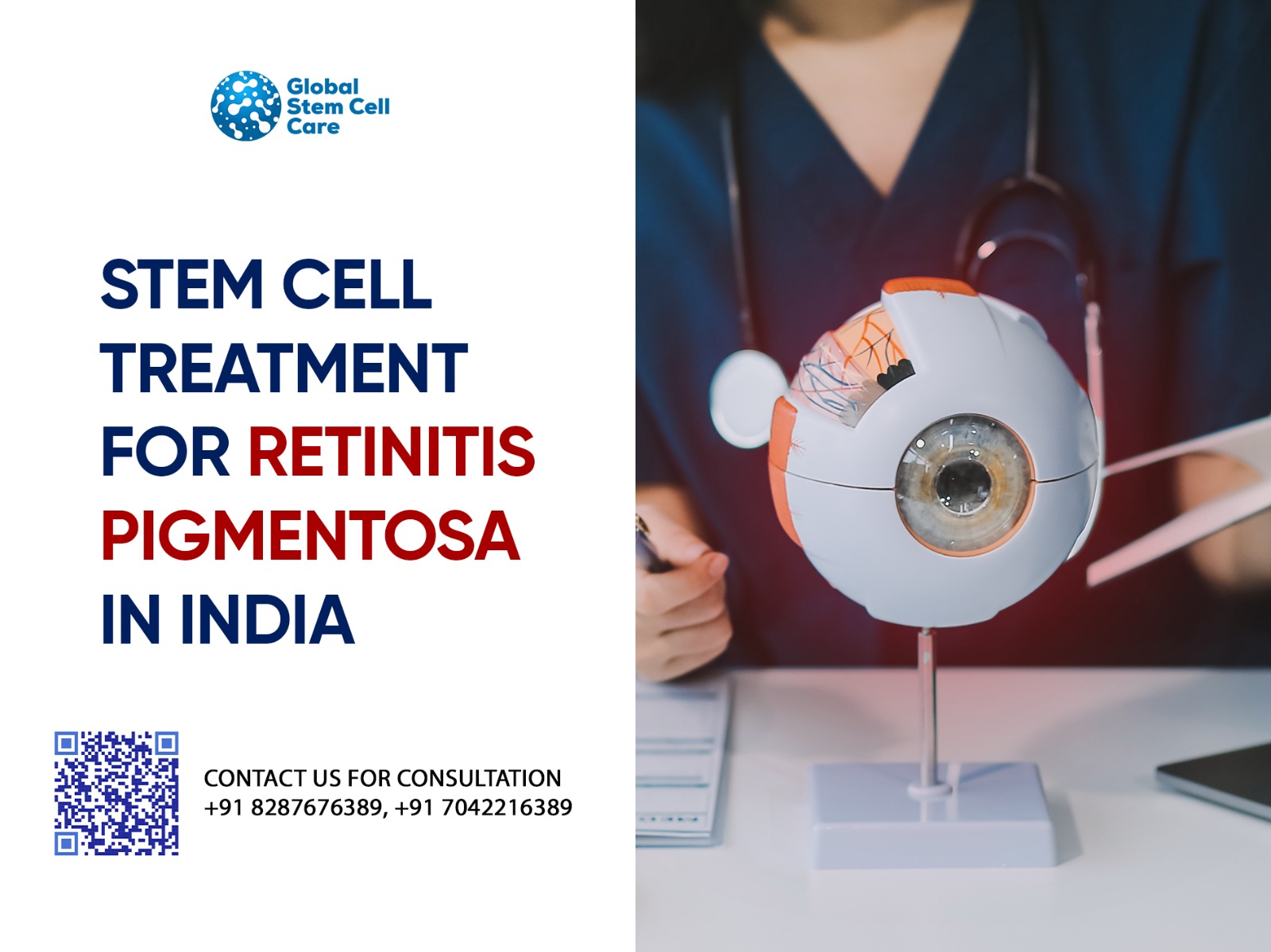Retinitis Pigmentosa (RP) is a genetic eye disorder characterized by progressive vision loss and in many cases blindness, because the light-sensitive layer of the eye degenerates. Conventional treatments to this date have been ineffective. However, research and discovery of stem cells bring new hope to patients afflicted with RP, retinopathy, or other kinds of damage in the eyes. All these patients are getting a ray of hope because of improvements in India about treatment related to stem cells. This blog is about the possibility of stem cell therapy in retinitis pigmentosa and why consulting with Global Stem Cell Care may be just the thing for those looking to pursue newer treatment options.
Understanding Retinitis Pigmentosa
Retinitis pigmentosa is an inherited disease that degenerates the photoreceptor cells in the retina, including rods and cones, which change any form of light into electrical impulses to be transmitted through the optic nerve to the brain. It gradually develops in the form of cell loss and consequently gradual loss of vision, usually starting from night blindness to tunnel vision, eventually causing complete blindness for most of the patients.
Symptoms of Retinitis Pigmentosa:
- Difficulty seeing in low light or darkness
- Loss of peripheral (side) vision
- Difficulty recognizing faces or reading
- Trouble adjusting to changes in lighting
- Eventual loss of central vision
The approach in the treatment of retinitis pigmentosa was multiple in nature, with some of its forms like vitamin supplements, glasses, and light-based therapies. It mainly works through the slowing down of the disease process rather than curing it completely. That’s where stem cell therapy is slowly changing the tide of treatment.
The Role of Stem Cells in Retinitis Pigmentosa Treatment
As stem cells prove to regenerate and repair damaged tissues, they become popular in the medical fraternity. In the case of retinitis pigmentosa, treatment with stem cells becomes a promising new landmark since it may give a possibility of replacing the degenerated or damaged photoreceptor cells of the retina.
Stem cell therapy for retinitis pigmentosa essentially uses two categories of stem cells:
Embryonic Stem Cells (ESCs)
These cells can differentiate to assume any form of a body cell, even the photoreceptor cells found within the retina. Researchers are working on developing the idea of utilizing ESCs to replace rods and cones lost in RP patients to regain their eyesight.
Mesenchymal Stem Cells (MSCs)
Mesenchymal stem cells have been proven to help in tissue repair and inflammation reduction; this indirectly enables current retinal cells as well as their functions to survive therefore delaying the progression of RP.
The results of this promising treatment have been proved through clinical trials and ongoing research to produce new retinal cells or improve vision in patients with retinitis pigmentosa. It is targeted at restoring vision, minimizing ocular damage, and highly improving the quality of life of those who suffer from RP as well as similar disorders.
Process of Retinitis Pigmentosa Stem Cell Therapy
All forms of RP require obtaining stem cells from the patient himself/herself (more commonly, bone marrow or fat tissue) or using donor stem cells through a fully acceptable means. The cells are then processed in a lab and administered in some fashion to the eye. It may be by injection directly into the eye, or as an intravenous infusion, depending on the nature of the patient’s particular condition.
Final Verdict
Stem cell therapy remains the newly emerging cure for retinitis pigmentosa. It holds new hope for individuals affected with the condition, that they can regain some of that vision lost and lead a more effective quality of life. As more research unfolds, stem cells may turn out to be a revolutionary treatment for retinopathy and injuries to the eye as well as for hundreds of other vision disorders. If you’re looking for some alternative retinitis pigmentosa treatment, call Global Stem Cell Care today to discuss how your life might be improved by the healing potential of stem cell therapy.
